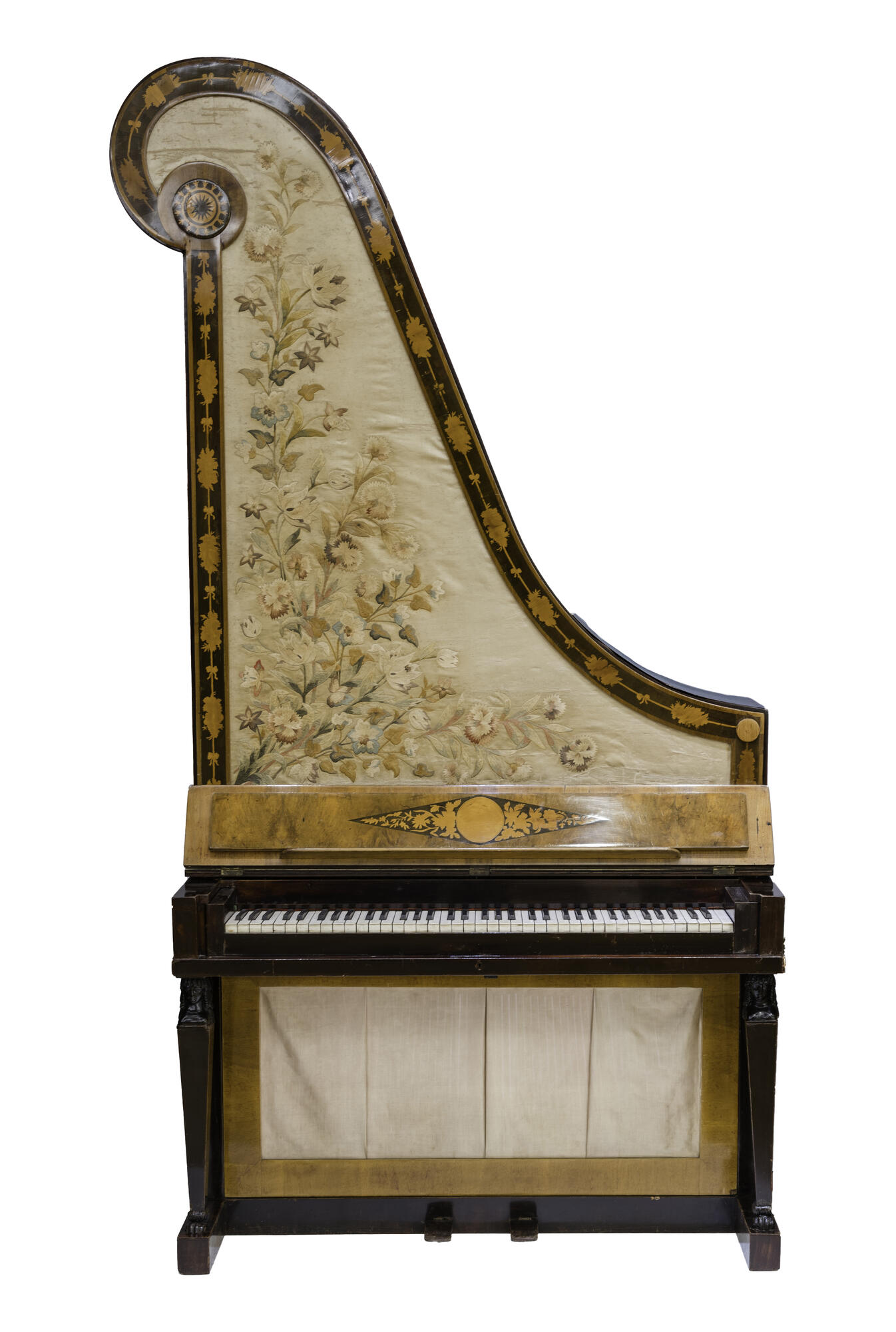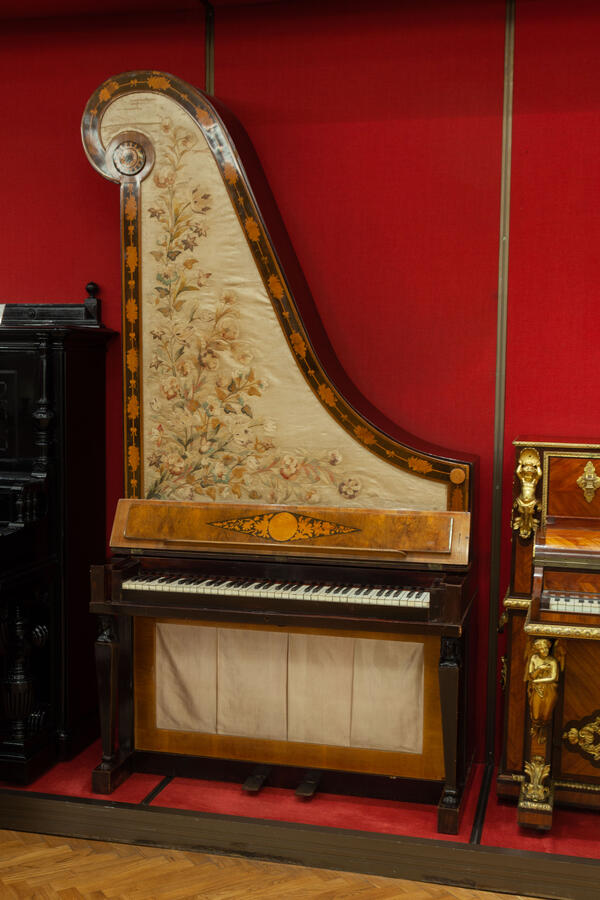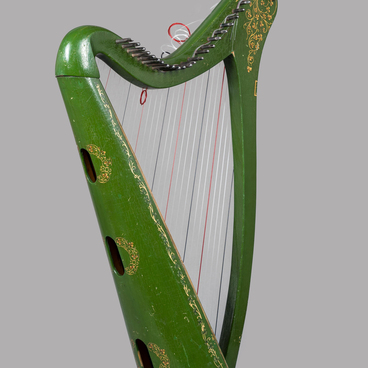This keyboard stringed percussion instrument is a type of upright or pyramid piano. The instrument with the unusual name “Giraffe piano” and an unconventional design was invented in England in the early 19th century and became popular all over Europe.
In fact, instrument builders attempted to create upright versions of the harpsichord, the piano’s ancestor, in the early 18th century. This instrument was known as the clavicytherium, and its action was significantly more complex than that of other harpsichords. When played, the instrument’s lid was usually opened which made the sound stronger.
By the mid-18th century, the first variations of the upright piano were invented. They were designed for practical reasons, in order to create compact instruments and save floor space.
This type of instrument was named the “giraffe piano” after a rather unusual event. In 1825, hoping to improve the diplomatic relations between the countries, Muhammad Ali of Egypt decided to bestow upon King Charles X of France a rather extravagant gift — a living female giraffe.
The animal’s journey to France was carefully planned. A hole was cut through the deck above so that the giraffe could poke her neck. To protect the giraffe from getting hurt due to the ship’s motions, her cabin’s edges were lined with straw. To receive adequate nutrition, the giraffe needed to drink 25 liters of milk each day. She was accompanied by three cows, two antelopes, and a milkmaid.
The gift was presented to the King of France two years later. The 880-km march from the seacoast to Paris took 41 days to complete. When the exotic animal arrived in Paris, the procession was met by an enthusiastic crowd. The road was filled with charabancs, coaches, and open-top carriages. Even the famous writer Stendhal could not resist the temptation and came to see the animal.
This event triggered a giraffe-inspired craze with everything made in the distinctive giraffe shape. The animal’s profile was depicted on porcelain, fabrics, fans, and tobacco boxes. Furniture was designed in the “giraffe” style, and women began to style their hair “à la Girafe.” The upright pianos were also named after the animal due to some similarity in shape. The instrument from the museum’s collection resembles the African animal even with the color palette of its wood finish.
In fact, instrument builders attempted to create upright versions of the harpsichord, the piano’s ancestor, in the early 18th century. This instrument was known as the clavicytherium, and its action was significantly more complex than that of other harpsichords. When played, the instrument’s lid was usually opened which made the sound stronger.
By the mid-18th century, the first variations of the upright piano were invented. They were designed for practical reasons, in order to create compact instruments and save floor space.
This type of instrument was named the “giraffe piano” after a rather unusual event. In 1825, hoping to improve the diplomatic relations between the countries, Muhammad Ali of Egypt decided to bestow upon King Charles X of France a rather extravagant gift — a living female giraffe.
The animal’s journey to France was carefully planned. A hole was cut through the deck above so that the giraffe could poke her neck. To protect the giraffe from getting hurt due to the ship’s motions, her cabin’s edges were lined with straw. To receive adequate nutrition, the giraffe needed to drink 25 liters of milk each day. She was accompanied by three cows, two antelopes, and a milkmaid.
The gift was presented to the King of France two years later. The 880-km march from the seacoast to Paris took 41 days to complete. When the exotic animal arrived in Paris, the procession was met by an enthusiastic crowd. The road was filled with charabancs, coaches, and open-top carriages. Even the famous writer Stendhal could not resist the temptation and came to see the animal.
This event triggered a giraffe-inspired craze with everything made in the distinctive giraffe shape. The animal’s profile was depicted on porcelain, fabrics, fans, and tobacco boxes. Furniture was designed in the “giraffe” style, and women began to style their hair “à la Girafe.” The upright pianos were also named after the animal due to some similarity in shape. The instrument from the museum’s collection resembles the African animal even with the color palette of its wood finish.



